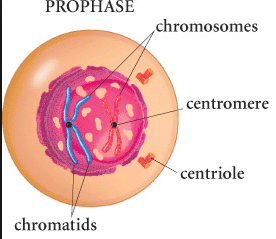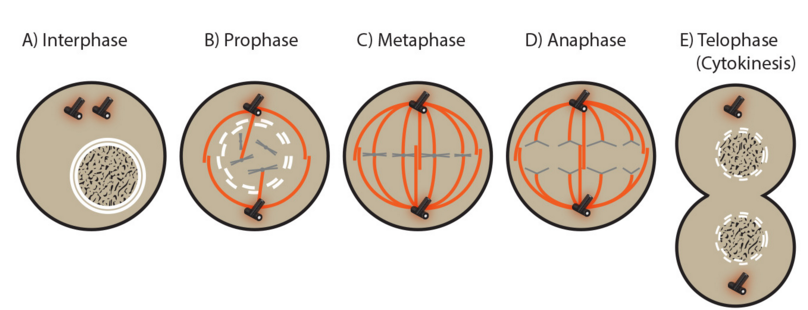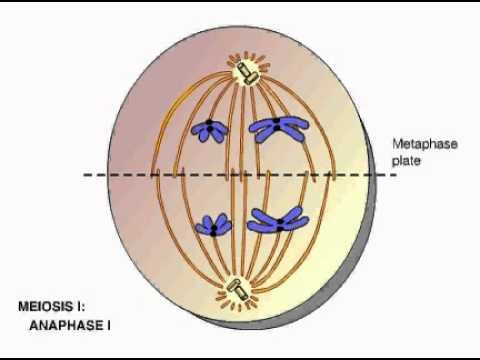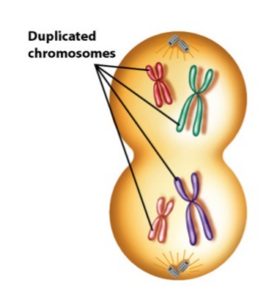Mitosis in plant cell and animal cell
The difference between mitosis in plant cell and animal cell are as follows:
| Plant cell | Animal cell |
| Centrioles are absent. | Centrioles are present. |
| No aster formation. | Aster formation occurs. |
| Cell plate is formed. | No cell plate is formed. |
| No furrowing of cytoplasm at cytokinesis. | Furrowing of cytoplasm occurs. |
| Occurs mainly in meristems. | Occurs in tissues throughout the body. |
Significance of meiosis
1. It maintains the same chromosome n umber in the sexually reproducing organisms. From a diploid cell, haploid gametes are produced which in turn fuse to form a diploid cell.
2. It restricts the multiplication of chromosome number and maintains the stability of the species.
3. Maternal and paternal genes get exchanged during crossing over. It results in variations among the offspring.
4. All the four chromatids of a homologous pair of chromosomes segregate and go over separately to four different daughter cells. This leads to variation in the daughter cells genetically.
Significance of meiosis 1/mitosis
1. It is an equational division through which identical daughter cells are produced having the same amount and type of genetic constitution as that of the parent cell.
2. It is responsible for growth and development of multi-cellular organisms from a single-celled zygote.
3. The number of chromosomes remains the same in all the cells produced by this division. Thus, the daughter cells retain the same characters as those of the parent cell.
4. It helps the cell in maintaining proper size.
5. Mitosis helps in restoring wear and tear in body tissues, replacement of damaged or lost part, healing of wounds and regeneration of detached parts (as in tail of a lizards).
6. It is a method of multiplication in unicellular organisms.
7. If mitosis remains unchecked, it may result in uncontrolled growth of cells leading to cancer or tumour.
Prophase 1

GIF

- Chromosomes becomes shorter and thicker, clearly visible in microscope. Nucleus disappears during this phase. It has four phases-
- Leptotene - The chromosomes condenses and are visible under electron microscope.
- Zygotene - It is the sub-stage, where synapsis between homologous chromosomes begins.
- Pachytene - Crossing over starts within the bivalents. The synaptonemal complex is complete, allowing chiasma to form.
- Diplotene - The synaptonemal complex degrades and homologous chromosomes separate from one another a little.
- Diakinesis - Chromosomes condense further during the this stage. The four parts of the tetrads are actually visible.
Meiosis 2

- Phases of Meiosis II
- Prophase II
- The events of prophase II are similar to mitotic prophase.
- Nucleolus and nuclear membrane disappear.
- Spindle fibres are formed at each pole.
- Metaphase II
- Chromosomes move to the centre of the equatorial plane.
- They get attached to spindle fibres centromere.
- Anaphase II
- The sister chromatids separate from one another and are pulled to opposite poles of the spindle due to contraction of the spindle fibres.
- Telophase II
- The chromosomes begin to uncoil and become thin.
- They reorganize into the nucleus with the reappearance of the nucleolus and nuclear membrane in each pole.
- Cytokinesis follows and four haploid daughter cells are formed and thus the meiotic division is completed.
Meiosis and mitosis
The difference between meiosis and mitosis are as follows:
| Mitosis | Meiosis |
| Occurs in somatic cells | Occurs in reproductive cells |
| Chromosome or DNA replication is followed by one nuclear division, thereby maintaining the amount of DNA and the number of chromosomes per cell constantly from generation to generation | Chromosome or DNA replication is followed by two nuclear divisions. Thus, each of the daughter cells contains half as many chromosomes and half as much DNA as its parent cell |
| Two daughter nuclei are produced from a single parental nucleus | Four daughter nuclei are produced from a single parental nucleus |
| The prophase is comparatively shorter duration and does not have any subgroups | Prophase is a longer duration. It is differentiated into subgroups |
| All chromosomes behave independently of each other | Homologous chromosomes get paired together |
| There is no crossing-over or exchange of chromatids between homologous chromosomes | Crossing-over or exchange of parts of chromatid between homologous chromosomes is a rule |






Comments
Post a Comment